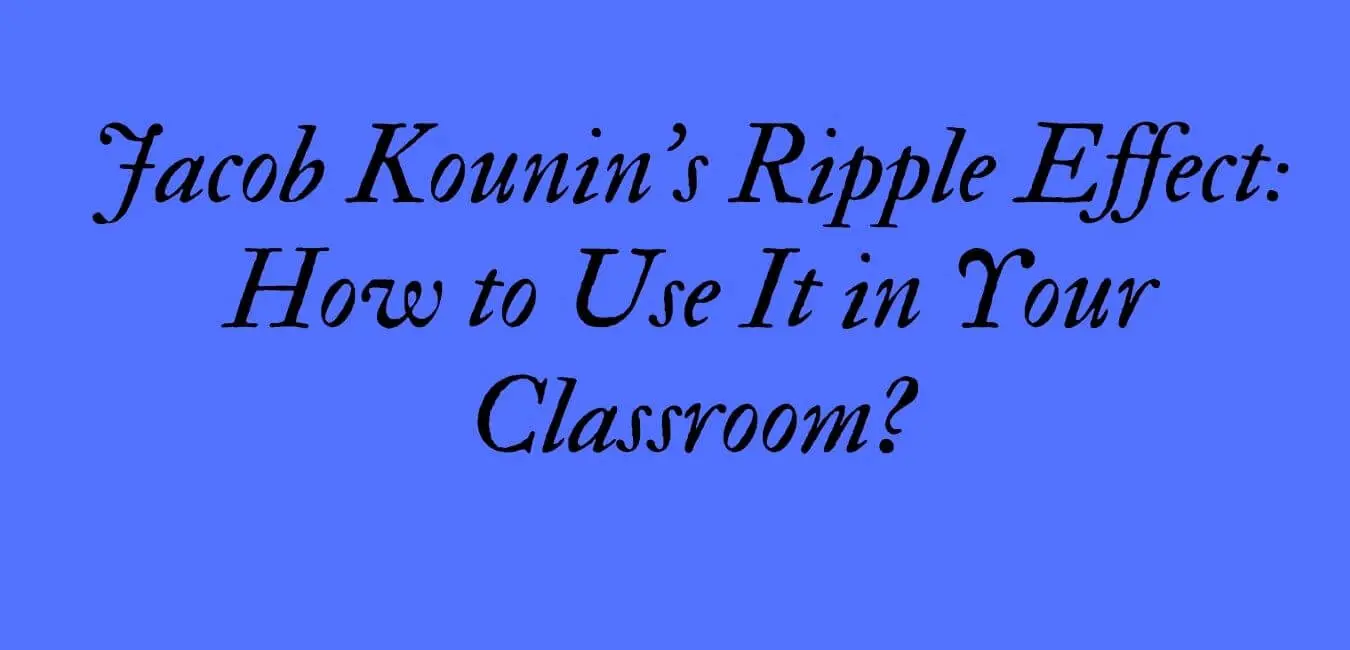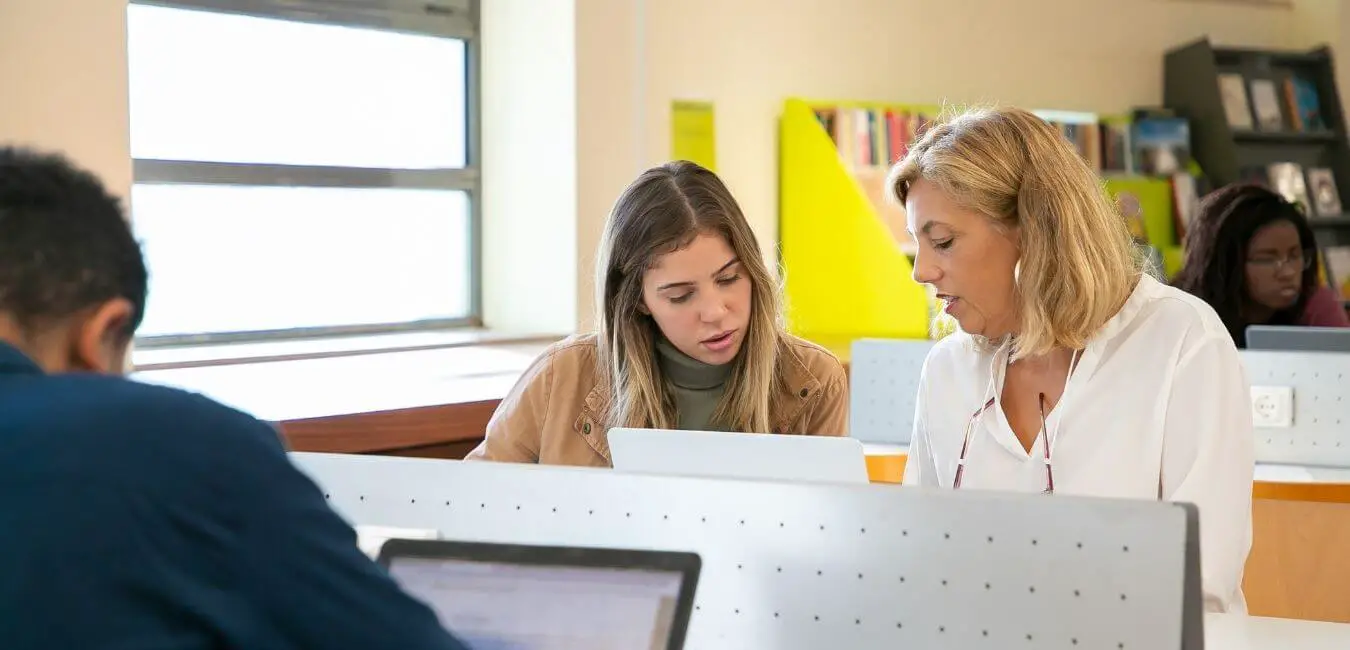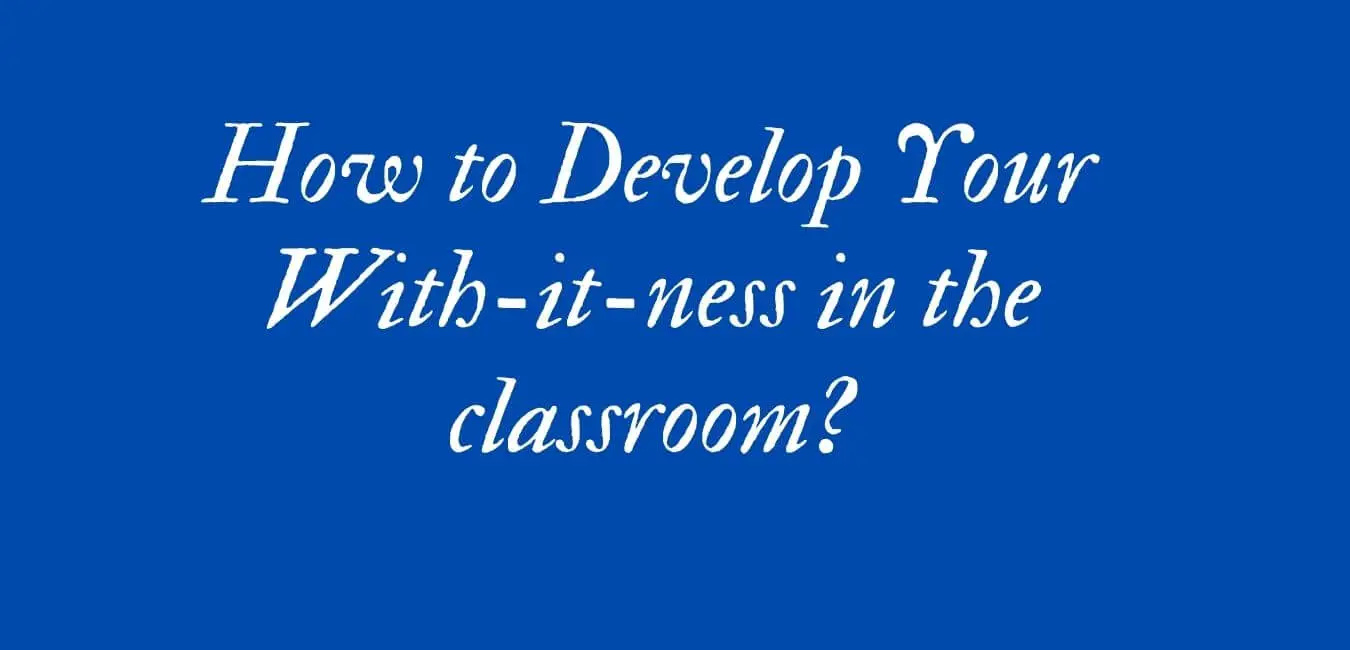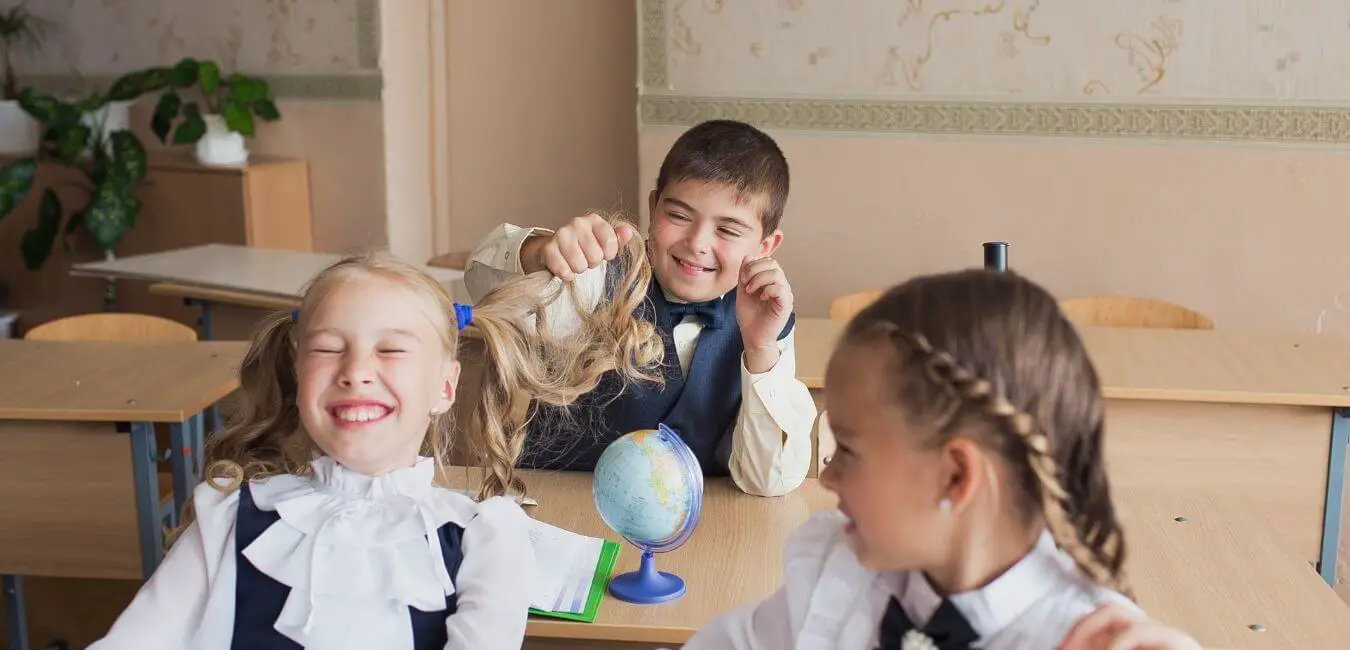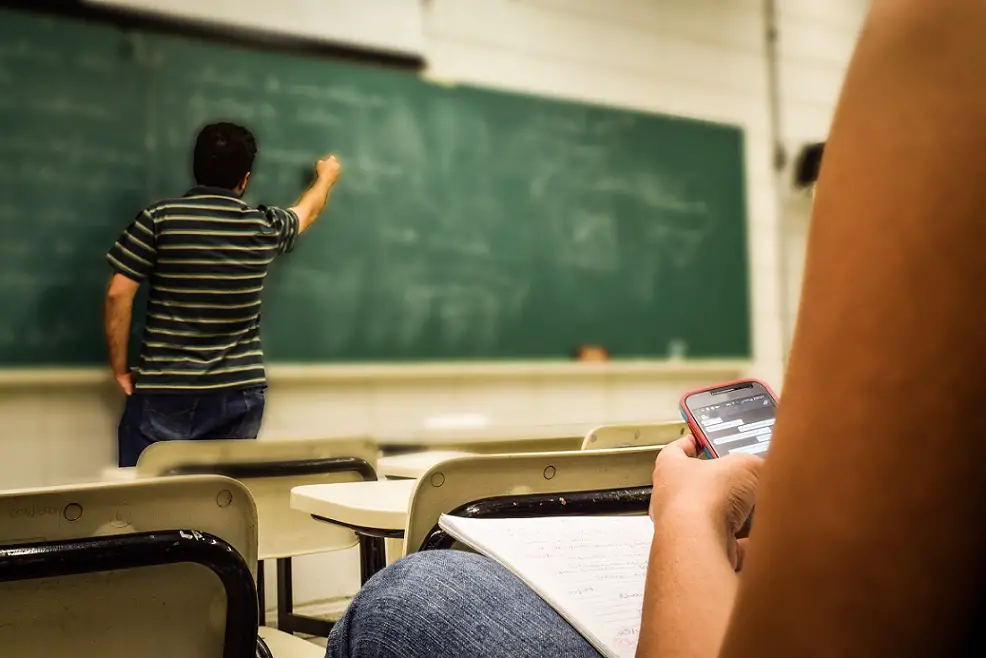The Kounin Ripple Effect is named after Jacob S. Kounin, who first identified it in 1977. He noted that if the teacher of an elementary school class is friendly and helpful, respectful, and interested in students as people, then students tend to develop those same qualities. This means that teachers who want to improve learning should look for ways to affect their classrooms positively.
A Classroom is an important place where all learning happens. Teachers are constantly working to improve their skills, their classroom environment, and the quality of education they provide for their students. One strategy that can help them to do that is by modeling excellent teaching behaviors, which will then influence the way that the students learn in class. The teachers’ behaviors, both in and outside the classroom, will affect the way students learn. This is called the Kounin Ripple Effect.
The Kounin Ripple Effect says that a teacher’s behavior or teaching style will have a positive or negative effect on the learning of his/her students. This ripple effect often happens over time and through many situations, not just limited to the classroom. If a teacher teaches positively and makes students feel empowered within her class, then this will have a ripple effect on the way they learn.
Factors Influencing the Effectiveness of Ripple Effect
Some factors will affect the effectiveness of the “ripple effect” of your actions or the classroom management strategies. These factors were identified by Kounin and Gump as follows:
1. Clarity
When correcting a student’s misbehavior, the clarity of your instructions and guidance determines the greatness of the impact it will have on the rest of the students watching you. That is, how clear are your directions for the student to stop the misbehavior?
The effect is greater on students who are watching if your directions and corrections are clearly stated and defined. You may want to the following if you want to give clear instructions for students to stop their misbehavior:
a. Give instructions that clearly define the misbehavior. For example, Sam, don’t talk when your friend is talking.
b. Identify the appropriate when giving the directions. For instance: Denis, we respect everyone in this class.
c. You might tell the student how to stop the misbehavior. For example, Fred put the marble in your backpack.
2. Firmness
How firm, persistent, and consistent are you in your instructions and guidelines? It measures how much of “I mean it” that is in your disciplinary strategy or standard.
The effects of your classroom management strategies will be greater if you are firm and persistent in your instructions.
Try as much as possible to be follow through with your instructions and guidelines until the student conforms to appropriate behavior. This will have a ripple effect on other students in the class and you may become effective in classroom management.
3. Roughness
This explains the level of hostility and aggressiveness you use when correcting a student who is misbehaving.
That is, the level of anger you apply will likely have either negative or positive ripple effects on the other students who are watching you discipline the misbehaving student.
If you use high roughness in your instructions, it will have a high negative ripple effect on other students. The reverse is the case if you apply no roughness or hostility in disciplining misbehaving students.
Examples of Kounin’s Ripple Effect in The Classroom
The list below covers just a few examples of the Kounin Ripple Effect in The Classroom. Teachers can utilize these strategies in order to improve their teaching styles and their students’ learning.
Examples of Kounin Ripple Effect in The Classroom:
1. A teacher who is engaged and enthusiastic about his/her work can affect his or her students in a positive way, which will improve their learning style.
2. A teacher who allows and encourages student participation and involvement can help promote his or her students’ growth mindset, resulting in better Learning Styles.
3. If a teacher is organized with their lessons and materials, then they will likely resonate with students and inspire them to become more organized and productive.
4. A teacher who is positive about her/his teaching strategies can cause those around him/her to adopt those same positive views as well.
5. If a teacher implements fun activities in his or her classroom, such as hands-on activities, then the students will be more relaxed and will learn better.
6. If a teacher is respectful to his or her students and treats them with kindness, then this can increase their trust in the learning environment and the learning process itself.
7. A teacher who asks questions during class time allows for students to think critically about the subject matter and can reduce his or her students’ stress levels.
8. A teacher who is prepared with lesson plans and materials will likely be more organized, which will make their classroom environment more efficient for learning.
9. A supportive teacher builds his/her relationship with the students, which allows them to improve their personal growth mindset.
10. A teacher who can plan out a balance of activities that are both fun and educational will resonate with students, inspiring them to adopt that same teaching style.
How Can Teachers Use It In The Classroom?
The Kounin Ripple Effect is a teaching philosophy that encourages the teacher to create an environment in which students feel safe and challenged at the same time. With this type of learning, students thrive and learn how to love school because they aren’t afraid of failure and no one feels like they can’t accomplish something.
This ultimately reduces disruptive behavior, which increases student achievement. When students work together in an environment that fosters learning, this allows for them to become stronger learners and use their creativity in the classroom.
Here are 10 Ways That Teachers Can Use The Kounin Ripple Effect In The Classroom:
1) Provide Criterion-Referenced Instructional Goals
The first way to use the Kounin Ripple Effect is to provide criterion-referenced instruction. This means that you make your goals about learning and not grades or pass/fail rates. You want each student to reach their highest level of achievement, and the only way to do this is by creating a safe environment and allowing all students to receive prompt feedback and encouragement. They need opportunities for success as well as constructive criticism.
2) Provide Opportunities for Student Collaboration and Cooperative Learning
Moreover, it can help you to provide opportunities for students to collaborate with each other on academic problems. This means that you are creating a classroom in which students support one another, learn from their peers, have time to work together, are not afraid to take risks, and feel empowered.
3) Use Assessment as a Tool to Inform and Guide Future Teaching and Learning
Another way to use the Kounin Ripple Effect is by assessing your students. This means that you provide opportunities for all students to receive targeted feedback on their strengths and areas where they need improvement in order for them to have a stronger foundation moving forward. This allows students to become better learners and know exactly what they need to work on.
4) Seek Feedback from Students: What Went Well, What Can Be Improved?
The fourth way to use the Kounin Ripple Effect is by asking your students for feedback about their learning environment. This will give you insight into what students are experiencing in your classroom. You can then use this information to improve their environment, create group tasks that work better for certain types of learners, and understand the struggles that they may be having.
5) Utilize the Proximity of Others in the Classroom to Encourage Student-Student Collaborative Learning
Another way you can use the Kounin Ripple Effect is by allowing students to utilize the proximity of others in your classroom. This means that you want all students to feel like they are included in the learning process. You give everyone opportunities to partner up or work with each other when necessary, but also allow for time when students can practice on their own.
6) Use the Skills of Teammates When Working Together on Assessments and Projects
Here, you create an environment where students utilize the skillsets of their classmates. This means that you are not doing all of the work for students in your classroom. Instead, you want students to learn from one another and draw on the strengths of their peers. Students can also learn from mistakes that one student makes to enhance future learning.
7) Create a Classroom Atmosphere in Which Everyone Feels Included and Not Judged
With the help of the concept, you can create an environment where everyone feels comfortable in sharing their work, ideas, and opinions. This means that you want the classroom atmosphere to be one where everyone feels comfortable with taking risks to learn. Students should also not feel like they are being judged when they make mistakes or do not know something.
8) Use Opportunities for Peer Editing and Redirections
The Kounin Ripple Effect can inspire you to give opportunities for peer editing and redirection. This means that when a student finishes an assessment or project, you allow them to receive feedback from their peers before receiving constructive criticism from you.
9) Provide Opportunities for Students to Give Constructive Feedback
The concept can also help you allow your students to provide constructive feedback to one another. This means that you want to encourage your class to give each other helpful insight for everyone in the classroom to improve and grow.
10) Provide Opportunities for Students to Reflect on Their Own Learning
The final way the Kounin Ripple Effect can be useful is by allowing students to reflect on their own learning. This means that you ask questions during class discussions for students to get insight into what they are thinking, feeling, and needing. You can also allow your students time at the end of each unit or course where they write about their strengths and areas of growth.
Final Thoughts
In this blog post, I’ve outlined 10 ways teachers can use Kounin’s Ripple Effect in their classrooms to create a positive learning environment for all learners. Whether you’re new or experienced, these tips will help you get started on thinking about how your classroom might be improved with some simple changes that take into account how students think and learn. Check out some of our articles here.

